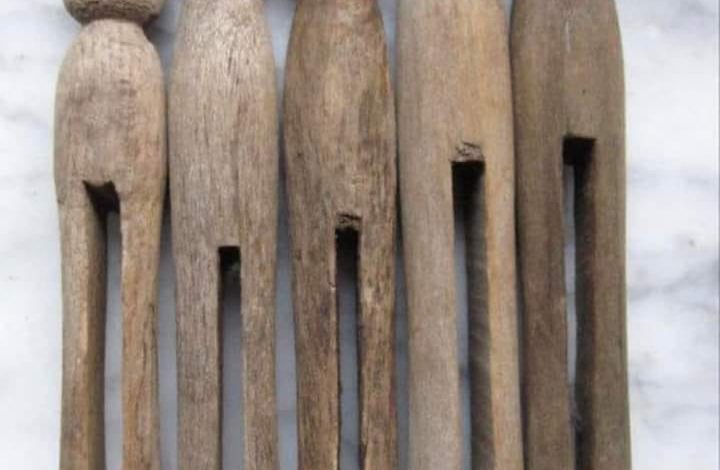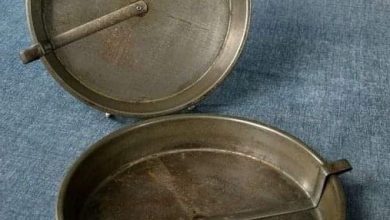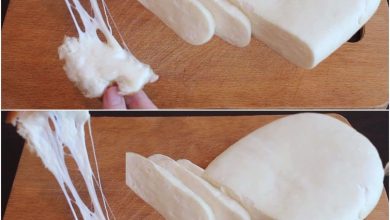The Timeless Utility of Traditional Wooden Clothespins

ADVERTISEMENT
The Timeless Utility of Traditional Wooden Clothespins
Introduction
The image above depicts a set of traditional wooden clothespins, simple yet ingenious tools that have been used for centuries to secure clothes on a line for drying. Despite the advent of modern drying appliances, wooden clothespins remain a symbol of practicality, sustainability, and nostalgia. This article explores the history, design, and continued relevance of wooden clothespins in contemporary life.
A Brief History of Clothespins
Clothespins, also known as clothes pegs, have a long and varied history. Their design has evolved over the years, but their primary function has remained the same: to hold clothes securely on a line.
Early Designs:
- The earliest clothespins were simple wooden pieces with a split down the middle, similar to those shown in the image. These early designs were likely handcrafted and used widely before the industrial revolution.
- In the 19th century, improvements were made to the design. David M. Smith patented the spring-clamp clothespin in 1853, adding a spring mechanism that improved grip and ease of use.
Industrial Evolution:
- The industrial era brought mass production, making clothespins more affordable and widely available. Factories produced them in various styles, but the simple, split wooden clothespin remained popular due to its effectiveness and durability.
Design and Functionality
The traditional wooden clothespin design, as depicted in the image, is characterized by its simplicity and effectiveness.
Material:
ADVERTISEMENT
- Typically made from hardwoods like maple or birch, these clothespins are durable and resistant to weather conditions.
- The use of wood makes them an eco-friendly alternative to plastic clothespins, which can break down and contribute to environmental pollution.
Structure:
- The design includes a rounded head for easy gripping and a split body that can securely clamp onto a clothesline.
- The tension created by the split ensures that the clothespin holds garments firmly in place, even in windy conditions.
Versatility:
- Wooden clothespins are not only used for hanging clothes. They have found numerous other applications, from crafting to securing bags of food.
Contemporary Relevance
Despite modern advancements in laundry technology, wooden clothespins continue to be used and appreciated for various reasons.
Sustainability:
- As people become more environmentally conscious, there is a renewed interest in sustainable and zero-waste living. Wooden clothespins fit perfectly into this lifestyle, as they are biodegradable and have a minimal environmental footprint.
Aesthetic Appeal:
ADVERTISEMENT
- The rustic charm of wooden clothespins appeals to those who appreciate vintage or farmhouse aesthetics. They are often used in home decor and DIY projects for their nostalgic value.
Functionality:
- Many people prefer air drying their clothes to save energy and extend the lifespan of their garments. Wooden clothespins are essential tools for this process, ensuring clothes are securely held in place on the line.
Creative Uses:
- Wooden clothespins are popular in arts and crafts. They can be painted, decorated, and used in various projects, from making ornaments to creating functional items like note holders.
Maintaining Wooden Clothespins
To ensure longevity and effectiveness, wooden clothespins should be properly maintained.
Cleaning:
- Periodically clean clothespins to remove any dirt or mildew. A simple soak in soapy water followed by thorough drying can keep them in good condition.
Storage:
ADVERTISEMENT
- Store clothespins in a dry place when not in use to prevent moisture damage. A clothespin bag or a covered container can protect them from the elements.
Replacement:
- Over time, wooden clothespins may wear out. Regularly check for any that have become too loose or damaged and replace them as needed to maintain optimal functionality.
Conclusion
The traditional wooden clothespin is a testament to the enduring appeal of simple, effective design. Its practicality, sustainability, and versatility ensure that it remains a valuable tool in modern households. Whether used for drying clothes, crafting, or as part of home decor, wooden clothespins continue to serve with timeless reliability.
As we embrace more sustainable practices and appreciate the beauty of functional simplicity, the wooden clothespin stands as a symbol of ingenuity and enduring utility.




